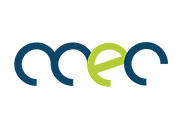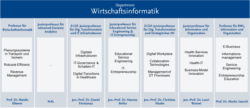DFG-Projekt GUIDE-IT
Guide to Data Sharing of Imaging Trials (GUIDE-IT)

Overall project: GUIDE-IT
Medical imaging is a foundation of modern medicine, and various radiological imaging methods are essential for diagnosis and treatment. Randomized trials compare clinical outcomes of two or more medical strategies and are thus pivotal for advancing medical care. In medical imaging, such trials are the basis for developing novel imaging biomarkers using artificial intelligence (AI) and radiomics. Further high-quality sources of new insights with high level of evidence are imaging registries and clinical trials that include imaging. A single-center trial is always at risk of bias due to lack of generalizability. Per-patient data analysis of several trials addressing similar questions is thus the best source for developing clinical guidelines and related imaging biobanks – the purpose of GUIDE-IT – could become important AI and radiomics test environments.
The five challenges for sharing data from clinical imaging trials are closely related to the FAIR guiding principles for scientific data management (findability, accessibility, interoperability, and reusability), but are regrouped here to focus on the aspects most relevant for the project.
- Stakeholder Acceptance: Sharing medical images between different institutions has high potential to advance medical care, but stakeholders, such as patients, participating clinicians and institutions, trial sponsors and policy makers may have relevant concerns which need to be addressed to make these stakeholders accept image sharing.
- Use and Access: There is a notable cultural change in the medical imaging community towards greater willingness to share data. An important challenge that remains to be solved is the implicit re-identification potential of medical images. Furthermore, intellectual property aspects complicate the situation.
- Data Quality: Quality of data is key to rendering them suitable and useful for sharing. Meaningful reuse of shared data requires disclosure of all information relevant for interpretation explicitly present in the metadata, i.e., image acquisition parameters, in a commonly understood form.
- IT Resources: Medical imaging typically creates very large datasets, which are quite heterogeneous compared to more commonly shared genomic data. Furthermore, the nature of imaging data requires large storage and computational capacities that need to be flexible and extensible to incorporate the requisite analysis tools.
- Sustainability: Due to the large and heterogeneous amount of data, provision of a sharing infrastructure for scientific medical imaging initially requires considerable investment costs. Our intention is to create such an infrastructure for academic use, which requires a model for sustainability. Thus, it is important to consider costs and value beyond the project horizon
Subproject FU Berlin: Economic Sustainability (WP 5)
The subproject of FU Berlin pursues the following aims:
- Value creation (5.1): Best practices for sustainable value creation and revenue generation in a not-for-profit model are investigated by considering related platforms.
- Development pattern (5.2): Dynamic development patterns in scale and scope of related platforms are investigated to inform recommendations for sustainable platform scaling.
- Cost structures and business models (5.3): Quantitative scenarios of cost expenses and depreciation will be developed to identify constraints on business model options.
- Economic sustainability concept (5.4): The insights from the previous sub-WPs will be synthesized in an overarching concept for value creation and appropriation of the GUIDE-IT infrastructure in the project phase.
|
Project period |
Mai 2023 – April 2025 (pre project with additional three years 2025-202) |
|
Contact: |
|
|
Budget |
126.500 EUR (Subproject Freie Universität Berlin: 2023-2025, funded by DFG |
|
Project partner: |
Related Conferences and publications:





